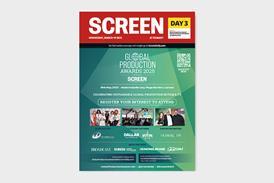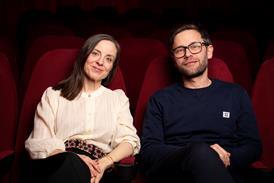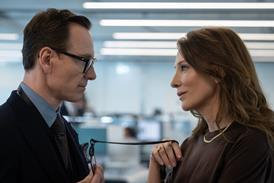The Taiwanese filmmaker talks about the unique financing and production process of his Venice competition film Warrior of the Rainbow: Seediq Bale, which is billed as the biggest-ever Taiwanese production.
After the sleeper success of Cape No. 7 (2008), which is the best-selling Taiwanese film in the history, director Wei Te-sheng took on a bigger challenge in his third feature film — the first Taiwanese war epic in 20 years
Starring Da-Ching, Umin Boya, Landy Wen, Lo Mei-ling, Japanese star Ando Masanobu and Taiwanese star Vivian Hsu, the film is set in the 1930s in central Taiwan, about the Wushe Incident in which Seediq tribe warrior Mouna Rudo led his people to rebel against the Japanese occupation.
Warrior of the Rainbow: Seediq Bale is produced by Wei’s ARS Film Production and Taiwanese studio Central Motion Picture Corporation with John Woo, Terence Chang and Jimmy Huang producing. The film will open in Taiwan in two parts with the first film opening on Sept 9 and the second on Sept 30. The international version is now premiered at the Venice Film Festival before travelling to Toronto, and Fortissimo Films handles international sales.
The film is the biggest budgeted film in Taiwan $25m – how did you finance it?
All I can say is that I’m lucky, and it’s a process that cannot be, and should not be, duplicated. We first used a bit of the profit made from my last film Cape No. 7, plus a government prize money that was to recognize our success of Cape No. 7 in 2008. The rest of the budget, actually a majority of it, came from loans of various Taiwanese banks. At the very late stage, Taiwan’s Central Motion Pictures Corporation came on board. At first, they joined not as a production company but a lender, because we were so desperate with money that we could not wait for the invest contract to be processed. I know I took a big risk shooting the film before all the money came in. But I think after the experience, we have learned that the film finance environment in Taiwan is getting more diverse. Hopefully in the future more banks are willing to offer loans to films.
How much international collaboration did you have in the production process?
There hasn’t been a war epic production in nearly 20 years in Taiwan. The industry does not have the experienced crew for a decent action epic film. We were heavily dependent on Japanese and Korean professionals in production design, special effects, action choreography and directing, explosions and even wire works.
Our production designer Taneda Yohei from Japan recreated an authentic Japanese-colonial ambience for the township of Wushe in 1930. And our action choreographers Yang Kil-Yong, and Shim Jae Won from Korea have designed some stunning action scenes that even John Woo were so impressed. I think if there is a rise of Taiwanese films in the recent two years, we have to be thankful for these international professionals.
How do you think of the international market of the film? What is your plan to make this expensive film to recoup?
I believe this film has a universal theme and can travel outside of Taiwan. The film is not just about the military rebellion against the colonist but also about the conflict and reconciliation between cultures and civilizations. I also hope to address larger questions of human dignity and self-fulfillment. We’ve sold to France and UK and we are hoping to reach North America and mainland China.
Earlier in August, the Taiwanese government had protest against the festival listing the film as “Taiwan, China”. It’s not the first time Taiwanese filmmakers face such a sensitive issue at international film festivals. What is your view on this issue?
We have to deal with the situation with wisdom. Sometimes it’s important to tolerate some minor annoyance in order to make ourselves seen in the international arena. We cannot give up the opportunity. For me, if I can tell a good story about a part of Taiwan’s history to the international audience, that is the best way to shout out where I come from.
Note: the origin of the film is now changed to “Chinese Taipei” after diplomatic negotiations
You have been assistant director for renowned director Edward Yang. What do you see his influence on your filmmaking?
I think his influence on me is on the spiritual side rather than the filmmaking styles. It took him eight months to finish A Brighter Summer Day (1991) and I’ve seen how his perseverance helped him through the difficult time of shooting. When I was shooting this film, at the worst shortage of budget in the middle of shooting, I would ask “if Edward was here, what would he do?” The thought gave me the strength not to give up after 12 months of shooting.





















No comments yet